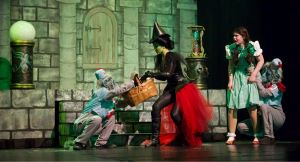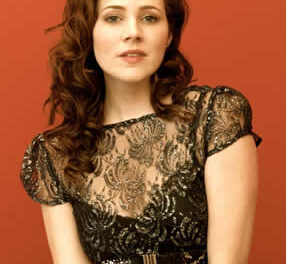With no starry guest soloist to distract, the EMF Chamber Player’s July 20 concert allowed all the focus to be on the compositions. The performers were drawn from the professional musicians who make up the faculty.
The Serenade, Op. 30 (1925), for flute, violin, viola, cello, and harp, is a masterpiece from the start of Albert Roussel’s mature period. Harry Halbreich, in notes for an Erato recording, alludes to the composer’s style with its rhythmic vitality, “broad, sinuous and unpredictable” melodic curve, and harmony with “savory polytonal clashes.” The Serenade was composed for the flute virtuoso René LeRoy. The flute is the most prominent instrument in the ensemble and the texture of the accompaniment is remarkably light since, from the harmonic sense of the word, none of the instruments is treated as a bass. This approach inspired Roland-Manuel to describe this as music “which uses its feet less than its wings.” Harp glissandi and episodes of string pizzicatos reinforce this impression. The heart of the score is a three-section Andante movement. The main theme is introduced by a fast flute melody above a slower figure in the strings, played “p.” A singing solo cello opens the contrasted central section. The two outer movements are fast and fleet. The musicians – Brain Gordon, Randy Weiss, Diane Phoenix-Neal, Marc Moskovitz, and Anna-Kate Mackle – played with a fine sense of style.
Rebecca Clarke is finally getting wider exposure. Born in 1886, the English violist was a pioneer for women both as a player and as a composer. She was the first woman to attend composition classes at the Royal College of Music in London where she studied with Charles Villiers who encouraged her to take up the viola. In 1913, she was one of the first women admitted to the Queen’s Hall Orchestra. Her fame as a composer dates from her Viola Sonata of 1919 and her 1921 Piano Trio in E-flat.
A repeated-note motto theme, given at the beginning of the first movement by the piano and then quickly taken up by the cello, serves to unify the three movements of the Piano Trio. The first movement, full of energy and striking string techniques, including a plethora of pizzicatos and an extended section played ponticello, ends with a canonic duet between the piano and cello. Framed by a violin solo, the second movement exudes a wonderful sense of timelessness. Perhaps the influence of English folk music can be heard in the dance-like opening of the last movement, the conclusion of which begins with a showy piano glissando. Clarke’s writing was advanced for its time and local context; her folk-like tunes sound closer to Bartók than Vaughan Williams.
With the piano lid fully raised, Yoshida Nagai easily balanced with his colleagues, violinist Lisa Sutton and cellist Neal Cary. Nagai brought great clarity and precise articulation to the sophisticated keyboard part. Both Sutton and Cary played with warm, full tone and closely matched phrasing.
For more information about Clarke, I urge exploration of http://www.rebeccaclarke.org/ [inactive 2/05]. See also my CVNC CD review of ” Middle Voices,” which includes Clarke’s gorgeous Prelude, Allegro and Pastorale (1941) performed by Triad musicians Kelly Burke, clarinet, and Scott Rawls, viola.
An extraordinarily satisfying performance of Brahms’ Clarinet Quintet in b minor, Op. 115, ended the concert. This work is permeated with the composer’s special sense of sadness over life’s losses and regrets, and its mood is often described as autumnal. Long-time EMF principal clarinetist Shannon Scott seemed to have limitless breath as she spun out a glorious line of melody and timbre matched by the rich tone of Daniel Reinker’s viola. Middle voices are the heart of much of Brahms’ music. Violinists Jeffrey Multer and John Fadial matched each other’s phrasing and sound so closely you would have thought they were long-time members of an established quartet. Underpinning all of this was the sonorous cello of Beth Vanderborgh. I had never heard a better interpretation and only a few in the same league.












